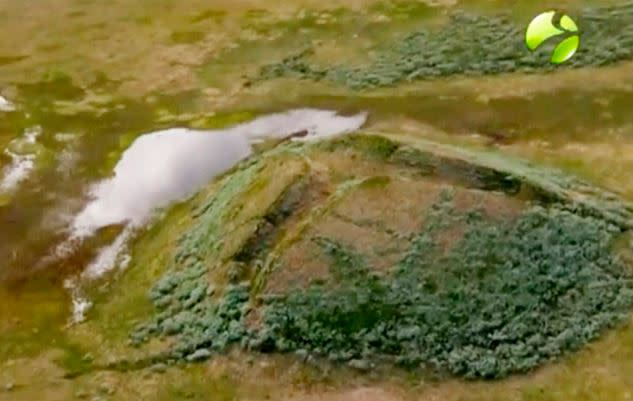Mysterious ‘gas bubbles’ blowing up in Siberia could pose warming danger to planet

Hundreds or even thousands of huge ‘gas bubbles’ are exploding in northern Siberia, leaving huge craters in the ground – and possibly posing a danger to our planet.
The ‘bubbles’ are thought to be caused either by global warming or changes in Earth’s orbit – which causes permafrost beneath the ground to thaw and release methane.
Dr. Gideon Henderson said, ‘The last time we saw a permafrost melting was 130,000 years ago. It’s a natural phenomenon because of changes in the earth’s orbit.
‘But what is definitely unprecedented is the rate of warming. The warming that happened 130,000 years ago happened over thousands of years … What we see happening now is warming over decades or a century.’
It could have an important effect on our climate – as permafrosts store significant amounts of carbon.
Henderson said, ‘When [permafrosts] release carbon, it will accelerate the rate of warming in the future.’
Siberian scientists say that up to 7,000 bubbles full of ancient gas about to explode.
Alexey Titovsky, director of the Yamal department for science told Siberian Times,: ‘At first such a bump is a bubble, or ‘bulgunyakh’ in the local Yakut language.
‘With time the bubble explodes, releasing gas. This is how gigantic funnels form.’
MOST POPULAR STORIES FROM YAHOO UK:
Benefits cheat who claimed £81,000 as she could ‘barely walk’ caught snorkeling in Maldives
Britain’s worst roundabout had SIX crashes just hours after opening
Churchwarden faces jail for having sex with ‘obscene’ life-size child sex doll
One in eight young people admit they’ve never seen a cow
Free movement of EU citizens to Britain will end in 2019
‘We need to know which bumps are dangerous and which are not.
‘Scientists are working on detecting and structuring signs of potential threat, like the maximum height of a bump and pressure that the earth can withstand.’
The Ural branch of Russian Academy of Science say, ‘Gas bubbles were discovered during a summer 2016 expedition to Bely island,’ said a spokesman.
‘Their appearance at such high latitudes is most likely linked to thawing permafrost which in is in turn linked to overall rise of temperature on the north of Eurasia during last several decades.’

 Yahoo News
Yahoo News 
